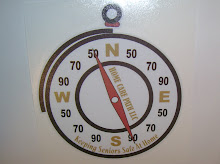In 2007 the FDA Launched the Generic Initiative For Value and Efficiency (GIVE) program. The program utilized existing resources helping the Food and Drug Administration (FDA) modernize and streamline the generic drug approval process. The result of the program is a reduction in the huge back log of abbreviated new drug applications for generic drugs.
A generic drug is a copy of a medication approaching patent expiration. A generic drug must contain the same active ingredients as the original formulation. The FDA uses pharmokinetic and pharmodynamic properties to determine the bioequivalence a generic drug has to the brand name medication. Bioequivalent requirements improve consumer confidence when the drugs dose, strength, route of administration, safety, efficacy, and intended use all match up.
The generic drug and the brand name drug are not identical twins. For example , the use of salt or ester as close variation of original chemical ingredient can be a visible label difference. Drug patents traditionally give twenty years of protection. The patent clock starts ticking during clinical drug trials so the market protection of a drug patent is about seven to twelve years. When the generic drug becomes available the market competition leads to lower prices for both generic and brand name.
Health insurance providers as well as consumers seem to want the lower priced generic medication. Drug manufacturers have adapted to the consumers increased acceptance of generic medications with preemptive processes. The processes have created generic products ready for FDA approval. Faster in store appearance results in a larger market share for the participating drug manufacturer.
Home Care Path www.homecarepath.com provides non medical in home custodial care for seniors in south central Wisconsin.
Sunday, October 24, 2010
Subscribe to:
Post Comments (Atom)

No comments:
Post a Comment